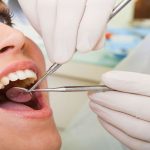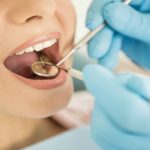When a root canal is performed, it is part of a dental specialty known as endodontics. “Endo” itself is a Greek translation for “inside” while “odont” is the Greek equivalent for “tooth.” Therefore, an endodontic treatment is a therapy that is applied to the inside of a tooth. So, a root canal procedure is considered an endodontic type of treatment.
How a Tooth Is Formed
To better understand the reason for a root canal in Baltimore, MD, you need to comprehend how a tooth is structured. A root canal specialist in Baltimore, MD can provide you with further information on tooth anatomy. Just inside the tooth under the enamel is a hard layer that is called dentin. The pulp, which is a soft tissue, is located beneath the dentin. Inside the pulp are nerves, blood vessels, and connective tissue, all of which produce the hard tissues that lead to dental development.
The Makeup of the Tooth’s Pulp
According to root canal specialist practitioners, the pulp spans from the tooth’s crown to the very end of the roots. The pulp connects to tissues that surround the root. While the pulp is essential for tooth formation and development, it can survive after a tooth matures. That is because the tooth is enriched and supported by the surrounding tissues.
Why Endodontic Treatment Is Important
When you need to see a root canal specialist, it is because the pulp, or the inside soft tissue in the tooth, has become infected or inflamed. Inflammation can result for one of various reasons such as repeated dental procedures, chipping, cracking, or decay. An injury to the affected tooth may also impact the health of the pulp. If the tooth is not treated, it can cause the patient discomfort and trigger an abscess.
So, if you need to see a specialist, it is because your tooth needs endodontic treatment to treat inflammation or infection tooth. Some of the symptoms may include prolonged sensitivity to temperature extremes, tenderness while chewing, pain or swelling, or discoloration of the tooth. In addition, the bone and gum tissues may feel tender to the touch as well as the adjacent lymph nodes. In some cases, the patient may not experience any symptoms at all.







